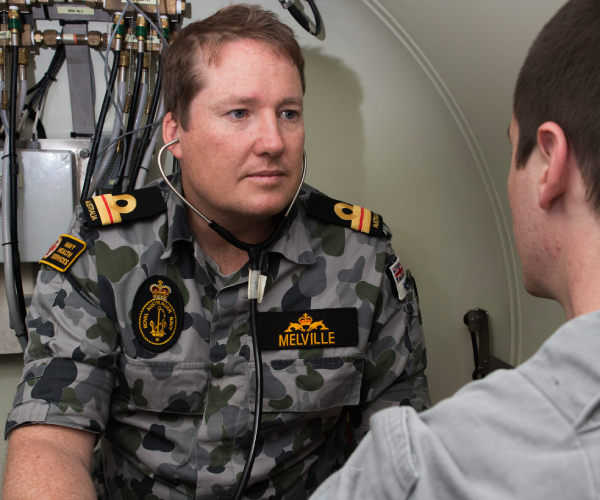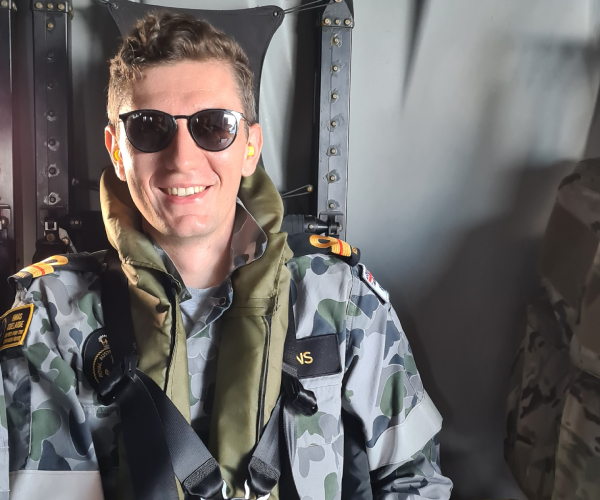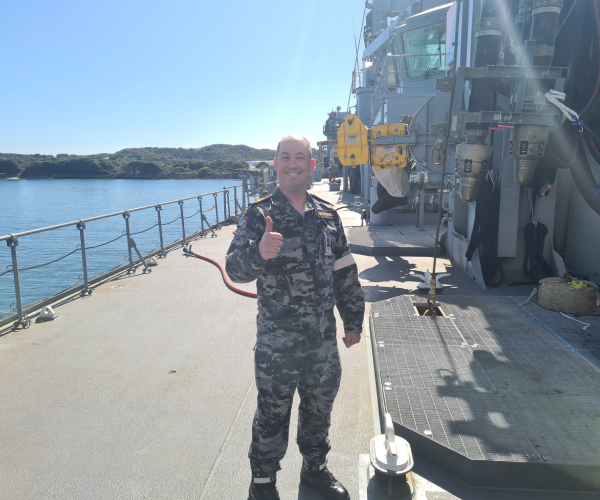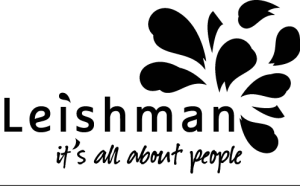Submarine Medicine Workshop
Thursday, 12 October 2023
1300- 1700
Location: Level 2, Meeting Room 1, Perth Convention and Exhibition Centre
Cost for conference delegates: $50
Cost for non-conference delegates: $200
The Submarine Medicine Workshop is currently fully booked. Please contact Ariana, If you would like to be added to the waitlist for the pre-conference. You will be contacted, as soon as the registration of the pre-conference workshop is available.
| Timing | Activity |
|---|---|
| 1300 – 1330 | Introduction of submarine medicine Dr Ninian Melville – SMA SUBMED Dr Patrick Owens – OIC SUMU W Dr Simon Mahoney – MO SUMU W |
| 1330 – 1400 | Briefing on escape and rescue scenario, talk through the surface level considerations and provide participants with the facts of the problem |
| 1400 – 1430 | Q and A on the problems associated with planning a submarine rescue and hyperbaric medical considerations |
| 1430 – 1500 | Present SUMU – W worked solution to the problem |
| 1500 – 1515 | Break |
| 1515 – 1530 | Introduce activity two, confined space triage and resus scenario |
| 1530 – 1545 | Gear allocation, layout, and discussion |
| 1545 – 1630 | Three-tiered activity for resus
|
| 1630 – 1700 | Debrief and questions |
- Introduce SUMU W and what the role is as well as what some of the key facts are regarding submarine medicine (submarine is at 1 ATA internally, how a submarine becomes pressurised, what the atmosphere changes are).
- The escape and rescue scenario will be briefed to the participants so that they can have enough information to begin thinking through some of the key issues of the tabletop exercise. The scenario will involve a submarine which is disabled and has personnel on board who are in need of rescue. The atmosphere will be briefed, along with the number of personnel, the pressure on board the boat, how long they have been there for, and an overview of what the likely injuries could be. The hyperbaric capabilities will also be briefly touched on such that participants can plan their treatments. The participants will then be given the chance to think through some of the problems that they would face in trying to recover those patients and how they would manage them.
- Any key issues faced by participants will be explored and possible solutions discussed.
- SUMU – W will present their solution while also highlighting some of the problems faced during running such a scenario which the team may not have considered.
- Afternoon refreshment break.
- Briefing for the nature of submarine treatment spaces, particularly AMS 2/PCC in the engineering spaces and what equipment and personnel are available as well as the confines that you are working in.
- Gear that the participants have to work with will be laid out giving them a chance to consider how they would allocate resources and lay their gear out during an evolution.
- The activity will be run with the participants going through (under the guidance of MEDSM’s) how they would 1. Position the patient/patients in that space 2. Run a resus in a confined space and 3. Move those patients to affect retrieval.
- Address any questions and conclude.
Workshop presenters

CMDR Ninian Melville
Dr Ninian Melville is the senior authority for submarine medicine in Australia. He has written the current guidelines for all medical aspects of submarine escape and rescue and has pioneered the submarine medical guide. He is also the current chair of the NATO Submarine Escape and Rescue Working Group (SMERWG). Dr Melville is also a submariner having been a weapons electrical engineer on submarines before going to medical school. He continues to be heavily involved in decisions on fitness for submarines, submarine policy and habitability. A GP Anaesthetist who works remotely at Port Hedland hospital in emergency and anaesthetics, Dr Melville also finds time for his three young daughters and wife Shannon.

LEUT Patrick Owens
Dr Patrick Owens is the current Offier in Charge of SUMU – W, the Royal Australian Navy’s medical unit responsible for submarine medical support, advice, hyperbaric medicine, and the medical aspects of escape and rescue. He is also the doctor responsible for entering a submarine in the event of an emergency to render medical care on the boat before all the casualties can be rescued. He is an aviation and underwater medical officer, has done his advanced skill training in remote medicine and is a part of the UTAS Expedition Medicine Team.

LEUT Simon Mahoney
Dr Simon Mahoney is a medical officer at SUMU – W, as well as an underwater medical officer. He has recently completed extended trips on HMAS Stalwart, HMAS Melville and HMAS ANZAC and is well versed in Navy Health delivery at sea and ashore. Dr Mahoney has a PhD in microbiology, is an anatomy lecturer with Curtin University and has a special interest in radiation and nuclear medicine, particularly in the upcoming nuclear submarine space. He is a GP, dad to two boys and husband to Kerry.
to Measure and Monitor the Health of the Force
Submarine Medicine Workshop
Thursday, 12 October 2023
1300- 1700
Location: Level 2, Meeting Room 1, Perth Convention and Exhibition Centre
Cost for conference delegates: $50
Cost for non-conference delegates: $200
The Submarine Medicine Workshop is currently fully booked. Please contact Ariana, If you would like to be added to the waitlist for the pre-conference. You will be contacted, as soon as the registration of the pre-conference workshop is available.
| Timing | Activity |
|---|---|
| 1300 – 1330 | Introduction of submarine medicine Dr Ninian Melville – SMA SUBMED Dr Patrick Owens – OIC SUMU W Dr Simon Mahoney – MO SUMU W |
| 1330 – 1400 | Briefing on escape and rescue scenario, talk through the surface level considerations and provide participants with the facts of the problem |
| 1400 – 1430 | Q and A on the problems associated with planning a submarine rescue and hyperbaric medical considerations |
| 1430 – 1500 | Present SUMU – W worked solution to the problem |
| 1500 – 1515 | Break |
| 1515 – 1530 | Introduce activity two, confined space triage and resus scenario |
| 1530 – 1545 | Gear allocation, layout, and discussion |
| 1545 – 1630 | Three-tiered activity for resus
|
| 1630 – 1700 | Debrief and questions |
- Introduce SUMU W and what the role is as well as what some of the key facts are regarding submarine medicine (submarine is at 1 ATA internally, how a submarine becomes pressurised, what the atmosphere changes are).
- The escape and rescue scenario will be briefed to the participants so that they can have enough information to begin thinking through some of the key issues of the tabletop exercise. The scenario will involve a submarine which is disabled and has personnel on board who are in need of rescue. The atmosphere will be briefed, along with the number of personnel, the pressure on board the boat, how long they have been there for, and an overview of what the likely injuries could be. The hyperbaric capabilities will also be briefly touched on such that participants can plan their treatments. The participants will then be given the chance to think through some of the problems that they would face in trying to recover those patients and how they would manage them.
- Any key issues faced by participants will be explored and possible solutions discussed.
- SUMU – W will present their solution while also highlighting some of the problems faced during running such a scenario which the team may not have considered.
- Afternoon refreshment break.
- Briefing for the nature of submarine treatment spaces, particularly AMS 2/PCC in the engineering spaces and what equipment and personnel are available as well as the confines that you are working in.
- Gear that the participants have to work with will be laid out giving them a chance to consider how they would allocate resources and lay their gear out during an evolution.
- The activity will be run with the participants going through (under the guidance of MEDSM’s) how they would 1. Position the patient/patients in that space 2. Run a resus in a confined space and 3. Move those patients to affect retrieval.
- Address any questions and conclude.
Workshop presenters

CMDR Ninian Melville
Dr Ninian Melville is the senior authority for submarine medicine in Australia. He has written the current guidelines for all medical aspects of submarine escape and rescue and has pioneered the submarine medical guide. He is also the current chair of the NATO Submarine Escape and Rescue Working Group (SMERWG). Dr Melville is also a submariner having been a weapons electrical engineer on submarines before going to medical school. He continues to be heavily involved in decisions on fitness for submarines, submarine policy and habitability. A GP Anaesthetist who works remotely at Port Hedland hospital in emergency and anaesthetics, Dr Melville also finds time for his three young daughters and wife Shannon.

LEUT Patrick Owens
Dr Patrick Owens is the current Offier in Charge of SUMU – W, the Royal Australian Navy’s medical unit responsible for submarine medical support, advice, hyperbaric medicine, and the medical aspects of escape and rescue. He is also the doctor responsible for entering a submarine in the event of an emergency to render medical care on the boat before all the casualties can be rescued. He is an aviation and underwater medical officer, has done his advanced skill training in remote medicine and is a part of the UTAS Expedition Medicine Team.

LEUT Simon Mahoney
Dr Simon Mahoney is a medical officer at SUMU – W, as well as an underwater medical officer. He has recently completed extended trips on HMAS Stalwart, HMAS Melville and HMAS ANZAC and is well versed in Navy Health delivery at sea and ashore. Dr Mahoney has a PhD in microbiology, is an anatomy lecturer with Curtin University and has a special interest in radiation and nuclear medicine, particularly in the upcoming nuclear submarine space. He is a GP, dad to two boys and husband to Kerry.
to Measure and Monitor the Health of the Force
Consultative Research Design Workshop for the ADF Life Course Study
to Measure and Monitor the Health of the Force
Thursday, 12 October 2023
1400-1600
Location: Level 2, Meeting Room 2, Perth Convention and Exhibition Centre
Presenter: Professor Lisa Jackson Pulver AM
Cost for Conference delegates: NIL
The Consultative Research Design Workshop is for conference delegates only.
Please contact Ariana, if you would like to register for this pre-conference workshop as an existing delegate.
- What are the considerations for establishing a lifelong longitudinal study?
- What to avoid or include to ensure accurate data collection?
- What domains/areas should be included in the study?
- Opportunities for collaboration – domestically and internationally
- How to reduce the survey burden and attrition for participants?
- Data management
- What are the lessons learned from similar studies domestically and internationally?
Workshop Presenter

Professor Lisa Jackson Pulver AM
Lisa is an academic leader, a recognised expert in public health, prominent researcher, a visionary and tireless advocate for education and health using innovative methods to ensure that both are inclusive for all.
Lisa is the Universities Australia nominee to The Australian Medical Council and has served as a Director for three terms. She is also in her third term as a ministerial appointee to the Australian Statistical Advisory Council. She has recently become a Fellow of the Royal Society of NSW. A visionary educator and strategically sound, Lisa is a leading commentator on education, health, data, research in both University environments and the Australian community in general, having led the successful development and adoption of the current strategy “One Sydney Many People” and having multiple guest appearances on The Drum, Q and A (ABC television), radio and via various podcasts.
Lisa has overseen dramatic increases in overall Indigenous student numbers and is now concentrating on educational innovations and curriculum reviews that will benefit all students, including undergraduate and postgraduate cohorts from all 170 countries and backgrounds from which University of Sydney students originate. Lisa is committed to an education which creates the next generation of leaders in the future workplaces of Australia and globally.
She serves her country in the Royal Australian Air Force Specialist Reserve and has moved through the ranks from her initial commission as Flight Lieutenant to her current rank of Group Captain. Her artworks adorn the reports she writes and maintains an active metal plate printing practice. Lisa is well known for her collaborative and inclusive approach to all that she does.


